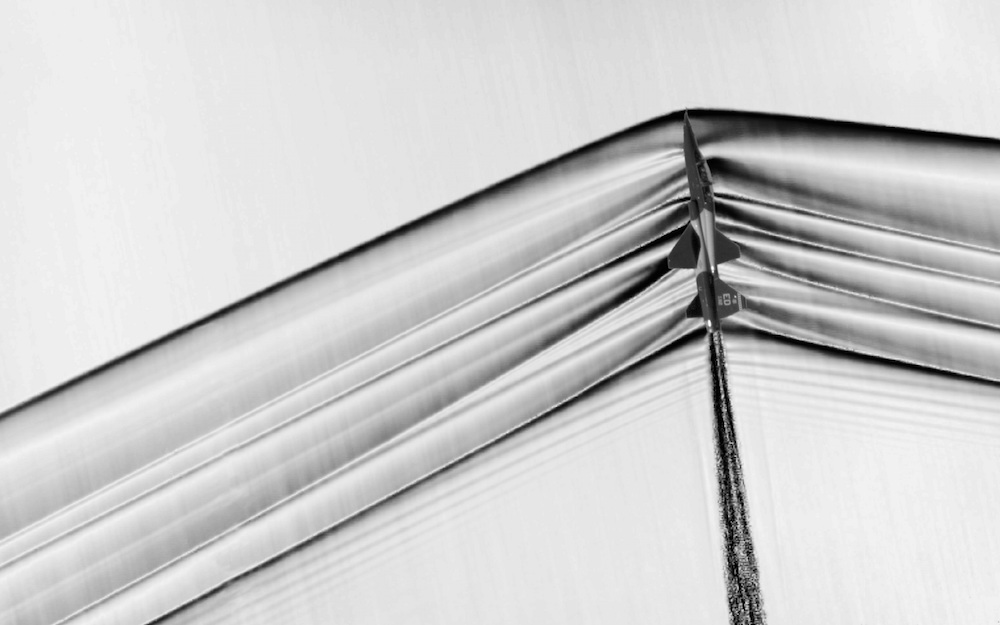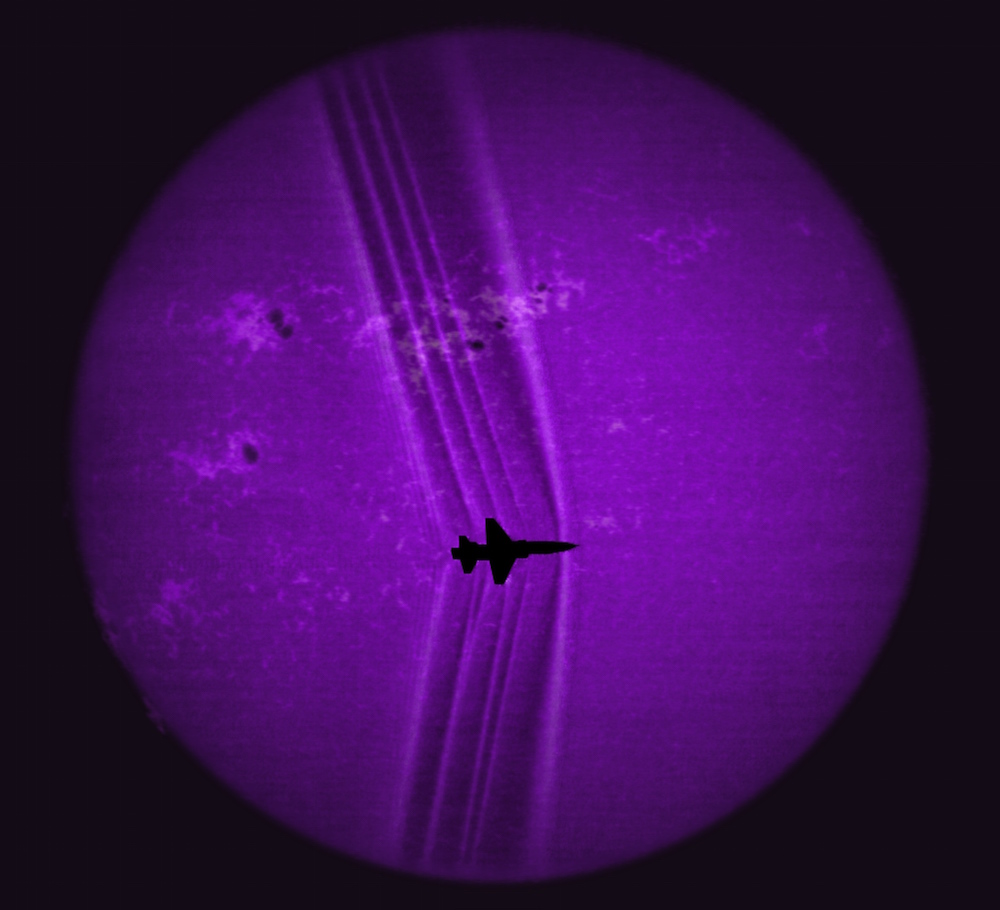
A new technique has captured images of the sonic waves that form when planes break the sound barrier.
The new images could one day help engineers design quieter supersonic planes by identifying the regions where a shock wave produces the most noise.
Currently, strict regulations prevent supersonic flights from flying willy-nilly over the United States because of the ear-splitting noise. But the lessons learned from the air structures surrounding military-grade aircrafts could improve the aerodynamics of the superspeedy jets.
"The end goal is to facilitate the ability for a new speed regime and open a new commercial market for civil transportation," Tom Jones, the project manager for flight at the Commercial Supersonic Technology project at NASA, said in a statement. [See Images of Shock Waves Around the Supersonic Jets]
Schlieren photography

The eye-catching images were captured using a 150-year-old method known as schlieren photography. (Schlieren means "streak" in German.)
The technique, first developed in 1864 by physicist August Toepler, focuses a highly aligned array of light beams at an object. Any sound waves from the moving object squish and stretch the air around the object, changing the air density. That, in turn, changes how the light reflects off the object, and these changes in light intensity are then captured in a shadow image.
Sign up for the Live Science daily newsletter now
Get the world’s most fascinating discoveries delivered straight to your inbox.
But schlieren techniques usually require fairly sophisticated camera equipment and weren't historically used on airplanes in the sky. Instead, researchers relied on scale models in wind tunnels. Other modifications have relied on the sun as the light source, but the images produced have been too grainy to reveal details about the fine structures that form within the shock wave, according to NASA.
Air-based method
But in recent years, scientists have used another method, called background-oriented schlieren, to capture images. In this system, several images capture the plane flying in front of a speckled background. Air-density changes caused by the shock wave distort the background pattern, and sophisticated image-processing techniques can then reveal the tumultuous flow patterns.
In 2011, NASA scientists figured out how to take this method airborne, using a technique they called air-to-air schlieren. They affixed a camera that can snap photos at 109 frames per second to one plane, called a NASA Beechcraft B200 King Air, and then flew it several thousand feet above a NASA F-18 fighter jet that was flying in a straight path at speeds of up to Mach 1.09. (Mach 1, or 768 mph (1,236 km/h) is the speed of sound at sea level.) In this instance, the scrubby Mojave desert landscape, with its cacti and tumbleweeds, served as the naturally speckled background.
The results revealed the fine-grained structures within the shock wave.
"Air-to-air schlieren is an important flight-test technique for locating and characterizing, with high spatial resolution, shock waves emanating from supersonic vehicles," said Dan Banks, principal investigator on the project at the NASA Armstrong Flight Research Center in Palmdale, California. "It allows us to see the shock wave geometry in the real atmosphere as the target aircraft flies through temperature and humidity gradients that cannot be duplicated in wind tunnels."
Spectacular images
To see if they could get better images, in 2014, the scientists installed two cameras on the King Air that captured higher-resolution images at a higher frame rate. In a series of tests over the next several months, the upgraded King Air captured images of a NASA F-15, F-18 and T-38C in flight.
The King Air was a subsonic plane, whereas the other planes were traveling at faster-than-sound speeds, making the flight paths tricky to synchronize, the researchers said. Because both planes were flying perilously close together, the aircrafts' navigational systems also had to be connected.
"Safely coordinating two very dissimilar aircraft, operating in close proximity and with a rapid closure rate, required a total team effort," said Air Force test pilot Maj. Jonathan Orso, who flew the T-38.
After each flight, the team used image processing to filter out the speckled background, and then averaged several coarse shock wave images to produce cleaner images of the air structures.
The planes also performed a number of heart-stopping maneuvers and altitude changes. This combination helped the team produce some of the first side views of the shock structure surrounding the fliers.
Follow Tia Ghose on Twitterand Google+. Follow Live Science @livescience, Facebook & Google+. Original article on Live Science.

Tia is the managing editor and was previously a senior writer for Live Science. Her work has appeared in Scientific American, Wired.com and other outlets. She holds a master's degree in bioengineering from the University of Washington, a graduate certificate in science writing from UC Santa Cruz and a bachelor's degree in mechanical engineering from the University of Texas at Austin. Tia was part of a team at the Milwaukee Journal Sentinel that published the Empty Cradles series on preterm births, which won multiple awards, including the 2012 Casey Medal for Meritorious Journalism.
Ancient 'military outpost' in North Macedonia might be birthplace of Alexander the Great's grandmother
NASA rover discovers out-of-place 'Skull' on Mars, and scientists are baffled
A long-lost ice sheet could predict the future of New York City — one in which Lower Manhattan and Coney Island are 'perpetually submerged'









